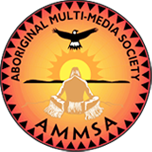Article Origin
Volume
Issue
Year
Page 11
When Jim Thunder was turned away from New York's American Museum of Natural History last spring without reclaiming Big Bear's sacred bundle, he was leaving behind one of the most spiritual gifts ever handed down to western Canadian Indians.
The 40-year-old Alberta Native couldn't convince American anthropologists he was chosen in a dream to bring the holy relic back to the Plains Cree of Saskatchewan where it belongs. He was forced to return from his 4,400 km cross-country spiritual run from Edmonton to New York City empty-handed, but more in tune with society's reluctance to recognize the rights of aboriginal people to preserve their own culture.
Thunder's pilgrimage may have been in vain, but it added miles to a course already set by other traditional Natives wanting to retain their heritage. His vision of returning the spiritual treasure to the people of its creator is one similarly shared by other Natives taking steps t maintain their traditional religion.
The fate of many indigenous relics similar to Big Bear's sacred bundle remain in the hands of government agencies and private collectors. Repatriation of these spiritual artifacts is now a mountain issue for Native elders who fear their heritage is losing its grip on the younger generation. The frustration echoes throughout Alberta and the rest of North America.
The Blackfoot Indians of southern Alberta and northern Montana have a similar dream to bring back what was lost when early western settlers frowned upon Native spirituality.
The Peigan Nation near Fort McAllen is planning to build a center of its own to house sacred bundles so they can be studied by elders who will teach the younger generation of the powers they possess.
Plans for the Peigan Renewal Center are just in the infancy, according to project coordinator Reg Crowshoe who has been negotiating with the Provincial Museum of Alberta to repatriate back to the reserve Blackfoot bundles it now holds.
He says a band-operated project is the best way for his people to bring back what they lost. But first they have to convince the museum Natives should control the bundles' destiny, not the government.
Crowshoe, a Native ceremonialist who assists the museum in inter interpreting many of the Native artifacts it obtains, believes the power of the bundles is useless if the sacred items are kept closed up in a public museum.
"If we can have accessibility to these bundles in the museum and bring them back home, I believe that will be one of the ways of searching back as to how they really developed," he says.
"With this kind of renewal program going on at a local level, we should be looking at reparation down the road."
The provincial museum in Edmonton has more than 30 sacred bundles in its possession, some of which are now the center of a dispute with the Black feet Confederacy in Browning, Montana - the hub of Blackfoot ancestry.
The Scriver collection was bought by the Alberta government for $1.1 million (U.S.) and contains 1,500 Blackfoot artifacts which Montana Indian elders want returned.
The collection is complete with three sacred Nations bundles including the Medicine pipe, Sundance and Beaver.
The latest demands are just a few in a long line that have troubled museum officials since spirituality began its comeback in the Native community the last 20 years.
"We're caught in the middle these days," explains Pat McCormack, the museum's ethnology curator. "Some communities would like to have these religious artifacts back. (But) the museum was always seen as a safe place by Natives wanting them preserved."
Museums are reluctant to hive up the holy artifacts because most were given to them in trust, she insists.
Many artifacts were obtained from private collectors, but others were offered by the creators themselves decades ago when Native religion was taboo to European pioneers.
Because of a growing awareness of indigenous spirituality in Native communities, McCormack says the museum i trying to convince Alberta Native leaders to make new medicine bundles in an effort to keep their holy traditions alive.
She says the bundles are being preserved at the museum for the benefit of both Native and non-Native societies wanting to know more about Alberta's indigenous peoples.
The museum's ethnology program was started in 1967 when much of the Native goods were either bought or donated by collectors.
he collections came from families who began bartering food and money for sacred relics when Native religion was outlawed in the late 1800s and early 1900s.
There is currently a push by Native elders to revive their religion and the power possessed by the bundles.
But McCormack says the power of spiritual healing lies in the hands of the bundle maker, not in the bundle itself. "So we are asking them to replicate these items."
She suggested it's essential to have a sacred bundle placed in the care of a museum rather than in the Native community where it may never be studied by the public.
McCormack says the provincial government isn't adding sacred bundles to it collection as much as it used to because of the growing awareness among Alberta Natives toward their religious beliefs. But the museum isn't prepared to return to their places of origin either.
For Crowshoe and the Blackfoot nations, making new bundles is out of the question and they're not willing to let public museum continue to tamper with Native religion as long as their children are willing to learn more about it.
And like Thunder, who made a high-profile trek to retrieve the gift left by his great-great-grandfather Big Bear more than a century ago, they're willing to go the extra mile to make sure traditions are maintained. "There's not even a word in our language for replication," Crowshoe says.
"We need to have our bundles back."
- 1793 views
